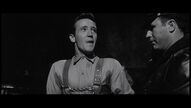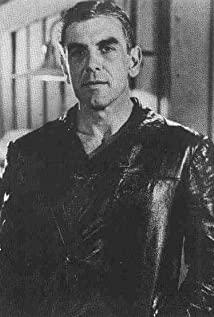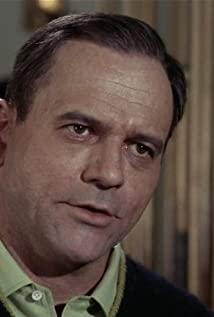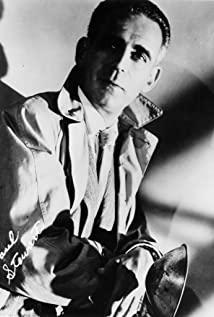different from the novel film. The director chose to start the story from the murderer's side. The oncoming coach directly grabs the audience's attention. When the gloom was no longer enough to express the identity of the murderer, the director directly chose complete darkness and only saw Perry's shoes (the soles of which later appeared as important evidence at Clutter's house) and guitar. Again, the music turned completely eerie, with the sound of a drum, and a match slashed Perry's face. Perhaps not the most terrifying, indeed, one of the truest murderers in American film history. Perry entered the public eye.
In the opening part, in order to maintain this gloomy atmosphere and to exaggerate the identity of the killer, the slow strings, slow snare drums, and sharp flutes appear repeatedly.
In stark contrast, the soothing brass and strings depicting the life of the Clutter family are not reminiscent of the impending tragedy.
It is worth mentioning that Nancy's phone call/Perry's phone call/Dick said Perry's name and Mr. Clutter lowered his head after shaving/raised his head and turned into a continuous clip of Perry, which inexplicably caused a question in the audience's mind: what the hell is this peaceful family? Has a mysterious relationship with these two mysterious teenagers.
Then, in the dialogue between the two killers, we not only learned about the intentions of the two teenagers, but also saw the relationship and character of the two through the director's grasp of the details. . Due to the respect of the original novel, the director, like his peers in the 1970s, used a deep focal length lens without hesitation. It seems to maintain an objective third-party observation perspective, but it is not in the close-up shots in the dazzling editing and the expression of the killer's identity. She's shows the objective and subjective qualities of new journalism and the rapid switching between Clutter and the killer in the writing of Master Capote.
Unlike the novel and the movie, the death of the Clutter family is directly explained in only 1/4 of the time of the whole story. No apparent explanation is made here of the Clutter family's relationship to the residents of Holcomb and attention is focused on the posthumous investigation.
Both the film and the novel feature a disturbed Perry and a careless Dick in the post-murder story. The difference between the film and the novel is that the former uses the light from bottom to top to show the dark and terrifying features of Dick in the close-up shots of Dick, while Perry does not have this. It also hints at the real culprit of the murder to some extent. .
From the scam after the two, the movie shows Dick's character better: a natural liar, of course, thanks to actor Scott Wilson's brilliant performance.
When showing the process of killing and the corpse, like other works of that era (such as Psycho), it does not directly show scenes such as death or blood, and the editing method also shapes the horror of the scene.
It is also worth mentioning that in the film The last time Perry faced the death penalty he recalled his father. The director once again used the effect of light and shadow to make the water flow on the glass reflect on Perry's face. The shadow of the water flow is actually the shadow of Perry's heart. It is not himself but his heart that is crying.
The technique of the whole film is almost carried out in the manner of the novel. Awesome editing with similar cinematic perspective shifts in the novel (Author's Story/Perry's Story/Perry's Memories/Dick's Memories). The climax of the film seems to be when Perry "narrates" the killing process. This part of the shot is more flexible and less rigid than before, which is why the whole story really happens. However, the director was still able to tell the story in a straightforward manner in this section. At the same time, this neither humble nor arrogant performance also made the audience feel that the film did not actually have a climax, just as the new journalism itself recorded the whole event objectively with the eyes of the author.
View more about In Cold Blood reviews











